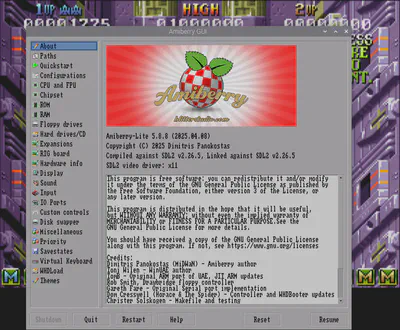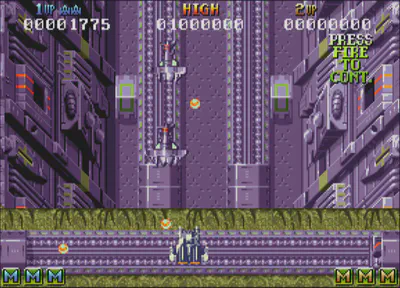Amiberry-Lite on Raspberry Pi

Amiberry by Dimitris Panokostas is the best emulator for the Amiga home computer. It is designed to run on Raspberry Pi, Linux and MacOS. If you are using Windows, try WinUAE which is the original emulator that Amiberry is forked from, with Amiberry being optimized for Raspberry Pi.
It provides a user-friendly interface and supports a wide range of Amiga games and applications. Amiberry like WinUAE, aims to deliver an authentic Amiga experience by accurately emulating the hardware and software of the original system. It includes features such as support for WHDLoad games, customizable controls, and various display options.
Homepage: https://amiberry.com
GitHub: https://github.com/BlitterStudio/amiberry
Wiki: https://github.com/BlitterStudio/amiberry/wiki
In this intro article we are going to install Amiberry-Lite on a Raspberry Pi 400 running the official Raspberry Pi OS. We will be using the lite version of Amiberry because it is better for emulating Amiga games on Pi 4/400 (you can find the details on the official wiki page).
This guide assumes you have a basic understanding of using the command line and have a Raspberry Pi set up with an internet connection. If you don’t have the official Raspberry Pi OS installed, you can download it from the Raspberry Pi website. Most of the times I use an old external SSD drive for better performance and durability.
Installation 💾
Download the latest release of Amiberry-Lite from the GitHub releases page. Look for the file named amiberry-lite-<version>-debian-<distro>-<arch>.zip. If you don’t know which version to download, you can check which distro you are using by running the following command in the terminal:
lsb_release -a
This will display information about your Linux distribution, including the version and codename. Make sure to download the correct version of Amiberry-Lite for your system architecture (e.g., armhf for Raspberry Pi 2/3, arm64 for Pi 4/400).
To check the architecture of your Raspberry Pi, you can run the following command:
arch
In my case the result is aarch64, which means I need to download the arm64 version of Amiberry-Lite.
Unzip the downloaded file to a directory of your choice. You can use the following commands in the terminal to unzip and install :
cd ~/Downloads
unzip amiberry-lite-v5.8.8-debian-bookworm-arm64.zip
sudo apt install ./amiberry-lite_5.8.8_arm64.deb
This will install Amiberry-Lite and its dependencies on your Raspberry. You can now run it by typing amiberry-lite in the terminal.
Running 👾


F12 (Fn-F2 on Pi 400) to open the Amiberry GUI. Check th “Input” tab for keyboard layout options, and have in mind that standard game controllers work out of the box.

This article only scratches the surface of Amiberry-Lite. There are many more features and options to explore depending on which Amiga game you are playing and the Amiga model you are going to emulate. Hopefully there will be more articles in the future about Amiberry and retro computing in general.
Have fun remembering the good old days of Amiga gaming!
/thanks MiDWan! 👍